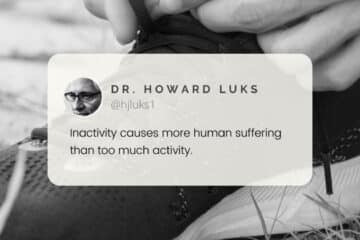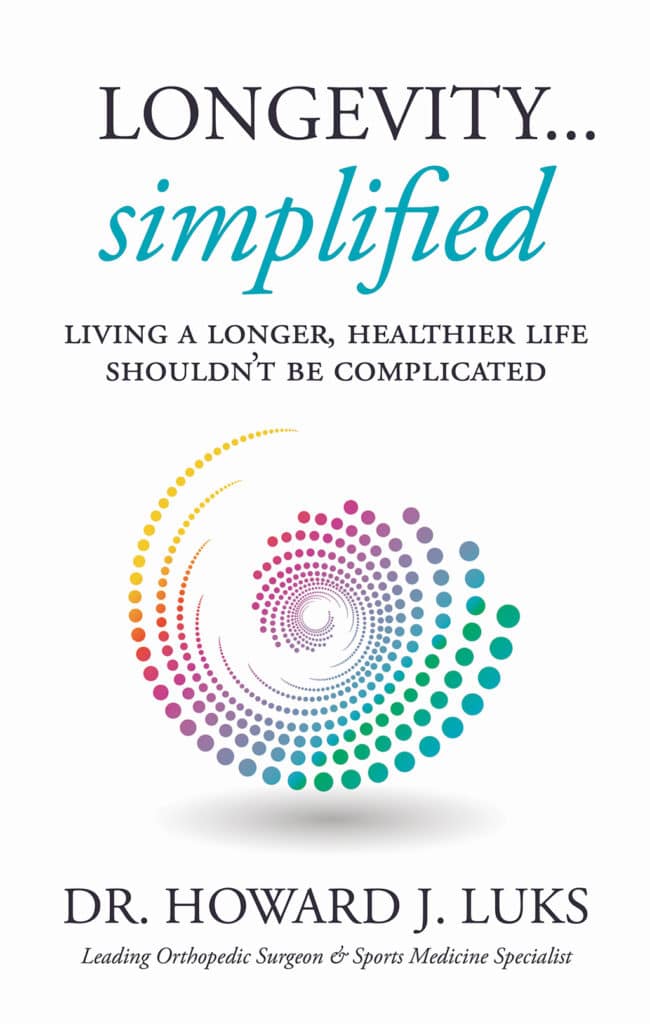
As healthcare providers, the words we use with our patients carry significant weight. When we tell someone they have “bone on bone” knees or compare their joints to those of a 90-year-old, we may think we’re helping them understand the severity of their condition. However, these phrases can do more harm than good. They can create fear, discourage activity, and even push patients toward unnecessary surgery. Let’s explore why these phrases are problematic and how we can shift the conversation to empower our patients.
The Impact of Fear-Inducing Language
When patients hear terms like “bone on bone” or their knees resemble those of a much older person, it can have a profound psychological impact. These statements often convey an unspoken message: “Your knees are beyond repair, and any further activity could worsen things.”
How Fear Leads to Inactivity
Many patients interpret these phrases as a warning to stop moving, fearing that activity might cause further damage to their joints. This couldn’t be further from the truth. Regular movement is essential for:
- Cartilage Health: Activity improves cartilage nutrition and metabolism by promoting the flow of synovial fluid, which nourishes the joint.
- Anti-inflammatory effects: Movement decreases inflammatory mediators in our joints. Walking is one of the best medicines for arthritis.
- Muscle Strength: Strong muscles around the knee help “stabilize” the joint and reduce pain.
- Overall Health: Staying active supports cardiovascular health, maintains a healthy weight, and improves mood. We don’t want our patients to throw their overall health under the bus because they fear worsening knee osteoarthritis.
When patients stop being active out of fear, they inadvertently worsen their condition. Muscle atrophy, joint stiffness, and weight gain can increase joint stress, creating a vicious cycle of pain and dysfunction.
Premature Decisions About Surgery
Language like “bone on bone” can also make patients feel that surgery is their only option. While joint replacement can be life-changing for some, it’s not always necessary, especially in people whose symptoms only started recently, regardless of the severity of the image. Many patients can manage their symptoms effectively with:
- Physical therapy
- Strength training
- Low-impact aerobic exercise
- Weight management
When fear drives the decision-making process, patients may choose surgery prematurely, missing out on non-surgical interventions that could improve their quality of life.
The Bigger Picture: Focusing Beyond the Knee
When patients become fixated on their knees as the sole source of their pain and limitation, they often lose sight of their overall health. Encouraging inactivity due to fear can lead to systemic consequences, including:
- Metabolic Decline: Inactivity is a significant risk factor for conditions like type 2 diabetes and cardiovascular disease.
- Mental Health Challenges: Sedentary behavior is linked to increased rates of depression and anxiety, both of which can amplify the perception of pain.
- Loss of Independence: Reduced physical activity can lead to muscle loss and balance issues, increasing the risk of falls and impairing functional independence.
As providers, we have a responsibility to help our patients see the bigger picture. Treating the knee in isolation ignores the body’s interconnectedness and the importance of maintaining overall health.
Shifting the Conversation: Empowering Patients with OA
Instead of using fear-inducing language, we can reframe the conversation in ways that empower our patients. Here are a few strategies:
1. Use Neutral, Encouraging Language
Rather than saying “bone on bone,” explain the condition in a way that highlights the potential for improvement. For example:
- “Your imaging shows changes in your knee consistent with osteoarthritis, but we know that staying active and strengthening the muscles around your joint can make a big difference.”
2. Emphasize the Benefits of Movement
Reassure patients that movement is not only safe but essential:
- “Exercise helps nourish your cartilage and keep your joints as healthy as possible. Let’s find activities that feel good and work for you.”
3. Present a Holistic Plan
Do you have questions regarding an Orthopedic injury or longevity?
Do you want to talk to an expert who can listen to you for 45-60 minutes and explain the options in detail?
Dr. Howard Luks offers remote guidance sessions to review your X-ray or MRI images and explain your options.
Dr. Luks has also received hundreds of requests for educational sessions on the topics discussed in his book, Longevity Simplified.
Encourage patients to view their knees as part of a bigger picture:
- “While we’re addressing your knee pain, let’s also focus on keeping you active and healthy overall. That will help you feel better in the long run.”
4. Address Misconceptions About Surgery
Educate patients about the full spectrum of treatment options:
- “Surgery is an option if other treatments don’t work, but many people find relief through strengthening, activity modification, and weight management. Let’s try these first.”
The language we use as healthcare providers shape our patients’ perceptions, decisions, and outcomes. Fear-inducing phrases like “bone on bone” can discourage activity, lead to premature surgery, and contribute to overall health decline. By shifting our language and focusing on empowering, evidence-based conversations, we can help our patients with osteoarthritis stay active, healthy, and hopeful.












Nubia Barrezueta
My Short Story:
Fifteen years ago, I started experiencing symptoms of osteoarthritis (OA), so I decided to completely change my lifestyle. I became a runner and have since completed six marathons. I still run every day. In 2022, I finished the New York Marathon, but it was painful. In March, I went to the doctor and found out that my cartilage is completely worn out. To compensate, I increased my strength training routine to reinforce my legs while continuing to run. However, I recently noticed a slight development of genu valgum (knock-knees).
How can I prevent this? Is it safe for my knees to keep running? Are there specific exercises or methods to prevent genu valgum? What do you suggest I do or where should I go for help?
Thank you very much. I would like to schedule an online appointment with you as a doctor to help me prevent this condition.
Thanks in advance!
Nubia
james Winterborn
Thankyou. Love your articles. I use the information every day at work as a physio.
Howard J. Luks, MD
thank you
Louis Almekinders
Please, back up your statements with peer-reviewed data. Do patients really become sedentary for fear of more damage just based on one particular phrase? Movement in severe bone-on-bone osteoarthritis decreases inflammatory mediators? What cartilage are you “nourishing” in bone-on-bone osteoarthritis? Unless you back up these statements with controlled studies you should not be accusing providers of using incorrect phrases.
Howard J. Luks, MD
27 years of experience counts for something, no? Countless people have been seen in my office because they’ve been told to stop… stop running, stop tennis, etc. Bcuse they’re bone on bone. Or people who have stopped because they were told they’re bone and bone and they naturally thought that exercise would simply worsen the damage.
These are harmful phrases. They are not scientifically relevant, nor how we are taught to describe the X-ray clinically.
There are plenty of studies that show a decrease in inflammatory mediators associated with exercise. There are studies that show a decrease in mediators associated with cartilage breakdown when we exercise.